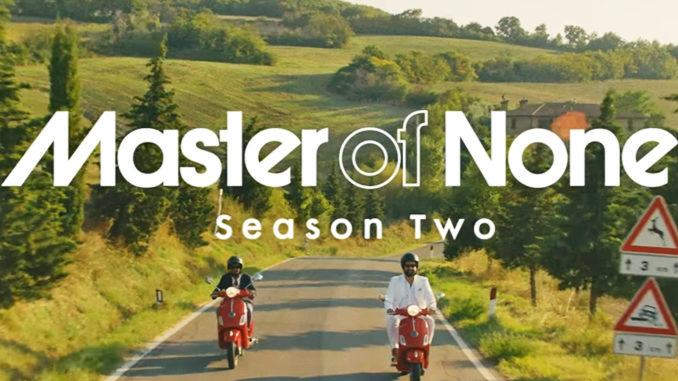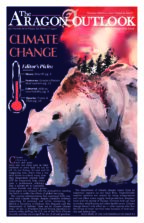
A year and a half after the premiere of the first season of “Master of None,” Aziz Ansari and Alan Yang finally released the long awaited second season of the show on May 12, 2017. Much of the season was filmed in Italy, where Ansari was working, so the second season of the show featured a cultural twist. The creators, Ansari and Yang, did extensive research in order to accurately portray culture, which includes their time in Italy.
Yang did extensive research into actual government employees to find real-life job idiosyncrasies in their jobs to incorporate into the script when he was previously a writer for the comedy show “Parks and Recreation,” which is a comedy focusing on local government employees. “Master of None” required a similar attention to detail because Ansari and Yang prioritized accurately representing cities, jobs and people’s experiences as minorities.
A few episodes take place in Italy, where Dev, played by Ansari, studied pasta-making in a small shop in Modena, Italy. In the previous season, pasta-making was Dev’s newfound passion, so he moved there in a state of existential crisis after a breakup. Ansari wrote this excursion into the trip because he did actually move to Italy for a while. He learned some Italian and some authentic pasta-making on a whim while culminating more life experiences and inspiration for the show.
“Master of None” season one’s success in capturing the experience of minorities living in New York, and not just the young adults, carried over in season two. The breadth of episodes range from family issues (“Religion,” episode 3) to dating among millennials (“First Date,” episode 4). Ansari finds inspiration from his own life to write the script, so much of the episodes are his trademark, witty, adorable humor. It took the two — Ansari and Yang — a year and a half to create the second season because they wanted the episodes to capture new, authentic life experiences and to not be repetitive of the first season.
The sixth episode, “New York, I Love You,” is a prime example to why Ansari and Yang are such talented writers. The episode omits the main characters from the show and follows completely different people living in New York: a doorman, a deaf girl and a cab driver. Ansari and Yang can eloquently tell detailed and meticulously curated storylines that don’t have to rely on previous episodes to build up characters. They hold the storylines up to the same standards as they do a regular episode with main characters. When the episode is following the deaf girl, there is no sound. While the silence seems to be a mistake at first, it is clear that the story is now from the perspective of the deaf girl. Ultimately, “Master of None” benefits from an unconventional perspective while holding the same standards as the original plot of the show. In turn, the storyline creates a unique experience for the viewer in addition to the beautiful, intricate complexities of the many different communities in New York City.
While dating is one of the main overarching themes of both seasons, season two better articulates the details and struggles of modern-day dating. In season two, the goals and dreams of the characters are no longer dependent on themselves, but on the unpredictable environment in which they live in. Unlike season one, when it was Ansari who had trouble sorting out his life, Ansari’s struggles arises from his partner or coworker being indecisive or inept with their own problems.
While this shift in stage of adulthood makes sense for the story, it inadvertently makes the characters a little more dry. The finale for the first season is all about finding out what Dev would do with his life. The finale for the second season, however, focuses on more external matters, rather than Dev’s internal conflicts. With this criticism in mind, it’s a little harder to empathize with characters when their issues are not as internal.
From the perspectives of minorities, “Master of None” expresses dreams, relationship problems and ethical dilemmas that are not specific to their own situation; in doing so, it shows just how relatable everyone’s different lives can be. An ode to all different kinds of people coexisting in New York, “Master of None” proves that it is possible to bring communities together.



